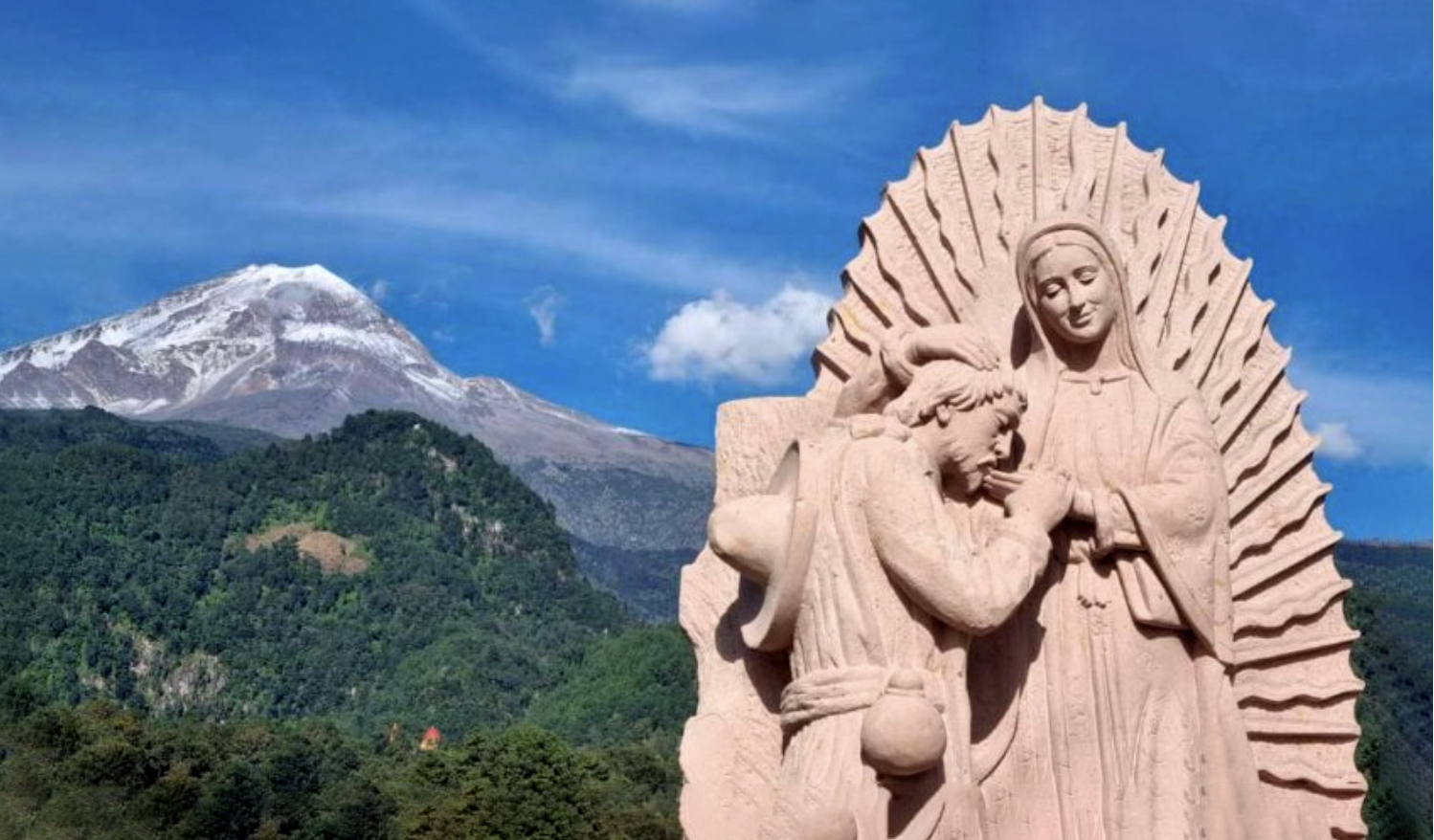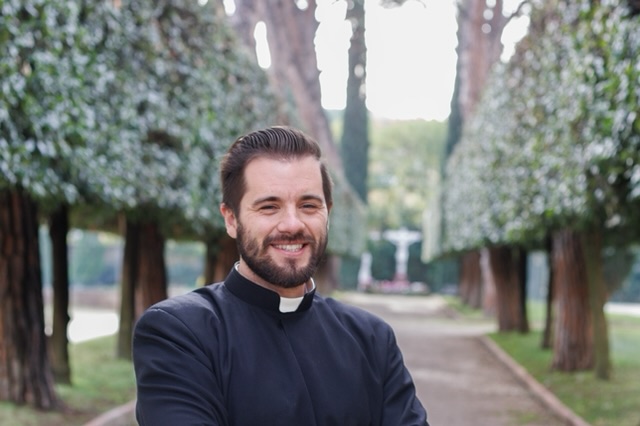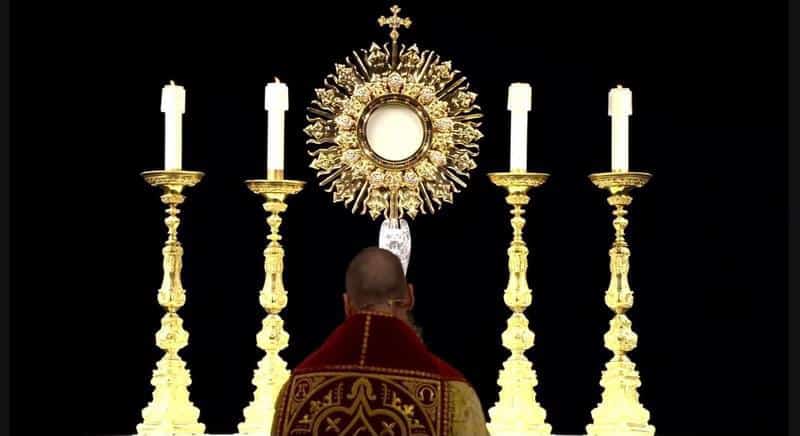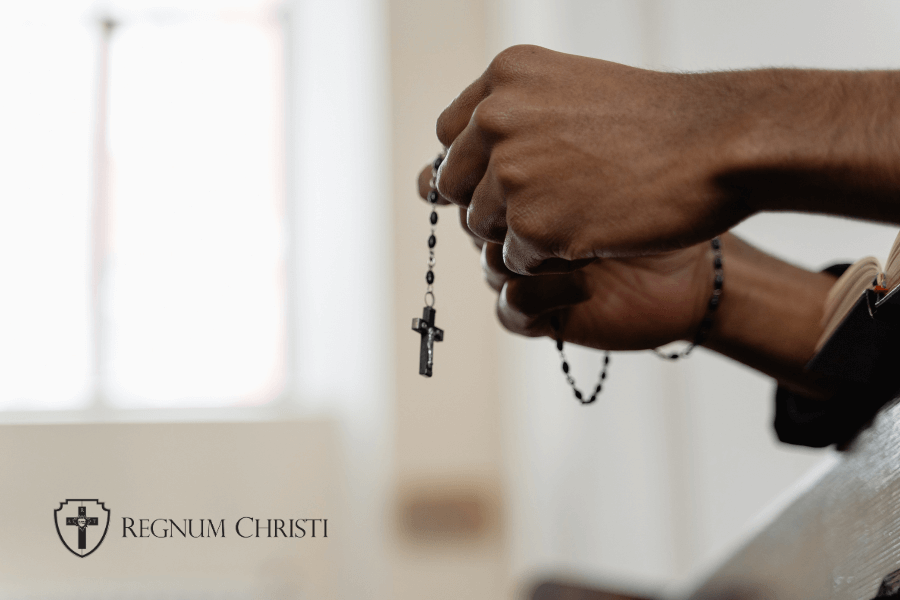In the context of the 500th anniversary of the Virgin Mary’s apparitions to Juan Diego, the “Camino of Guadalupe” arises on the mountain Pico de Orizaba, Veracruz: an initiative of the Catholic Church at the service of the poorest and most marginalized.
The Pico de Orizaba, the highest summit in Mexico, symbolizes the most elevated destination one can aspire to: heaven. Making the pilgrimage of the Camino of Guadalupe is a metaphor for walking with determination toward eternal life, holding the Blessed Virgin Mary’s hand.
The Camino of Guadalupe offers a choice of itinerary: you can start from the municipal trailhead or from Great Macuilacatl and make the journey of either 29 or 22 kilometers to the Garden of Guadalupe, located in the village of El Minero. The intermediate stops established so far are San Martín, La Ciénega, Chilapa, and Las Trincheras.
We interviewed Fr. Evaristo Sada, LC, director of “Misión MasAlto,” a promoter of the Camino of Guadalupe.
What does the Camino of Guadalupe consist of?
The Camino of Guadalupe was inspired by the Intercontinental Guadalupana Novena, commemorating 500 years of the apparitions of Our Lady of Guadalupe to Juan Diego, which will be celebrated in 2031.
It consists of a path that crosses villages on Pico de Orizaba, with one unique feature: every five or six kilometers, you arrive at a plaza, and on each plaza is a large, beautiful image of Our Lady of Guadalupe. One is sculpted out of stone; she appears in another with Juan Diego, and another is with St. John Paul II, and with St. Rafael Guízar y Valencia in another; there is one made of iron that is five meters high—but they all share the context of the place’s beauty. The Pico de Orizaba is an extraordinarily beautiful place, a mountainous area with flowers, birds, rivers, waterfalls, and extraordinarily beautiful people, too.
This is the atmosphere in which a pilgrim can climb the mountain. In Sacred Scripture, the mountain is the place of encounter with God. And this is what we seek: that as they climb the mountain, holding Mary’s hand, pilgrims encounter God in an atmosphere of beauty.
Why beauty? Because it is how the Blessed Virgin presented herself to Juan Diego. If you remember, Tepeyac Hill is an arid region full of cacti and boulders, but suddenly, Juan Diego finds that the rocks are diamonds, the cacti are roses, and he is surrounded by a sunrise and the songs of birds, as the Nicán Mopohua expresses. Juan Diego then realizes he is in a heavenly setting, introducing him to a supernatural environment. This is the same experience that pilgrims can have.
What is your suggestion?
One of the things we seek is what we could somehow call “the Guadalupan method.” Our Lord wanted the evangelization of Mexico to come through Our Lady of Guadalupe. Therefore, if God already chose this path for the evangelization of Mexico, then, as the saying goes, “look no further.” Our Lady of Guadalupe and the Events of Guadalupe have countless elements of a masterful pedagogy: the pedagogy of God and Mary. May these same methods of the Blessed Virgin be how the communities of Orizaba are evangelized and, even more, become the evangelizers of our time: farmers with incredible faith, from whom we learn much and who can be a wellspring of faith for all of Mexico.
How does the Camino de Guadalupe relate to love for one’s neighbor?
Another key element is that prayer and action, devotion and works of Christian charity, go together. The Catechism of the Catholic Church says that charity is the seal of authenticity of the prayer life: if you are filled with God’s love, then you overflow with love; if you don’t overflow with love, then it is doubtful that there is a strong interior life.
Here we seek very intentionally to take hold of a path of prayer, but also a path of works of mercy, just as the Blessed Virgin cared for Juan Diego’s uncle and resolved the conflicts between the Spanish and the indigenous Mexicans, as a mother who encourages mercy and charity.
We are beginning a project to build 25 houses in a village called Chilapilla with the help of the Banorte Foundation. We are implementing a system of drinking water with the Rotoplas Foundation. We are building greenhouses to grow flowers because the people in the region are extraordinary at cultivating flowers; at the moment we run 83 greenhouses that belong to high-school girls and mothers, giving them the means to support themselves and their families; and other activities aim to improve the living conditions in the area.
In this way, we propose that the people who do the Camino indeed grow in their love for the Blessed Virgin, but growing in love for the Blessed Virgin, they also grow in love for Christ since Mary always brings us to Jesus. Our Lady of Guadalupe presents herself as the bearer of Christ: a pregnant woman who brings us the Savior and, at the same time, the works of mercy that are the seal of the authenticity of Christian life. Thus, we hope that anyone who does this Camino ends up loving Mary, Christ, and their neighbor much more.
Translated from the original Spanish first published here.





